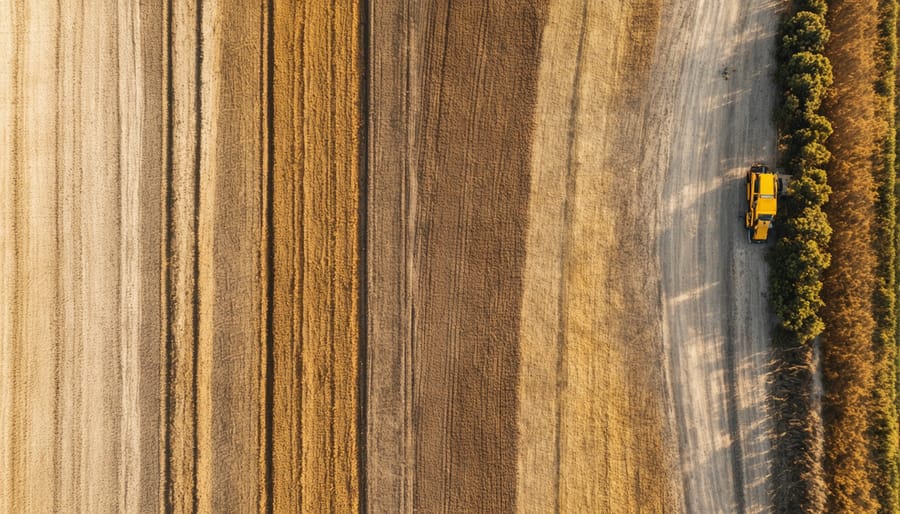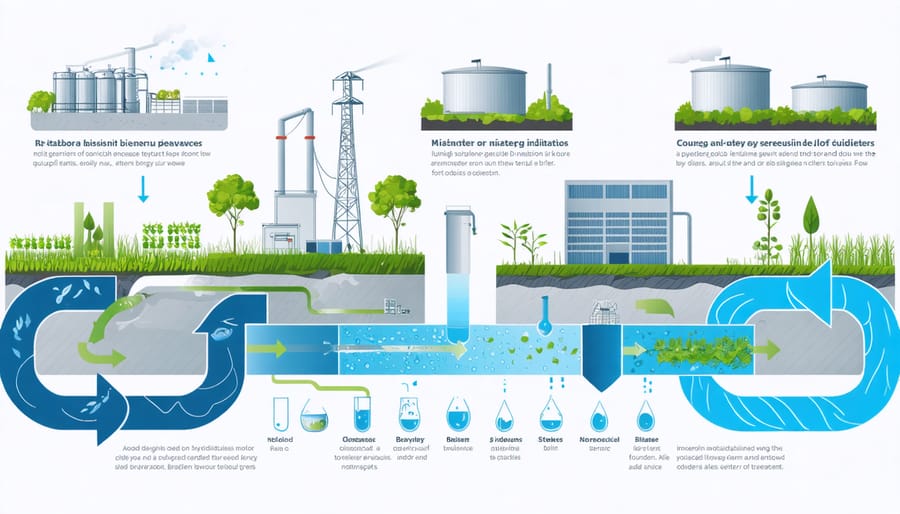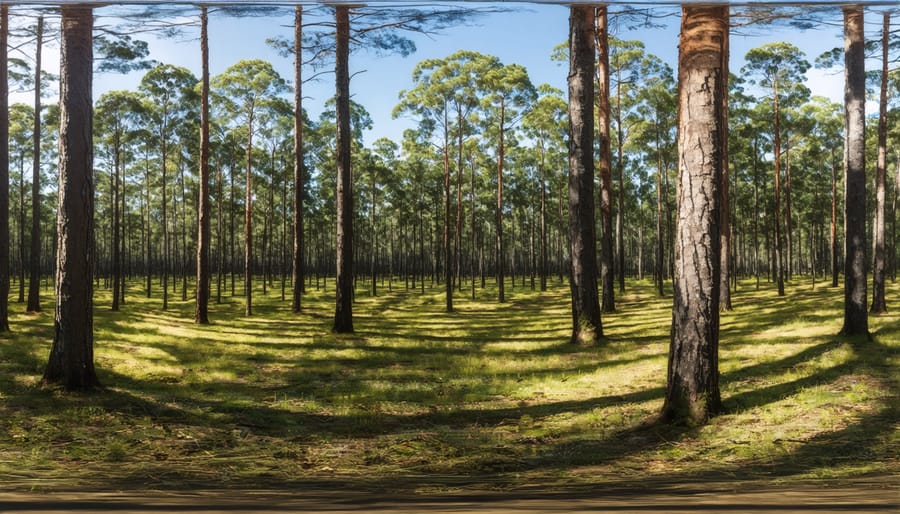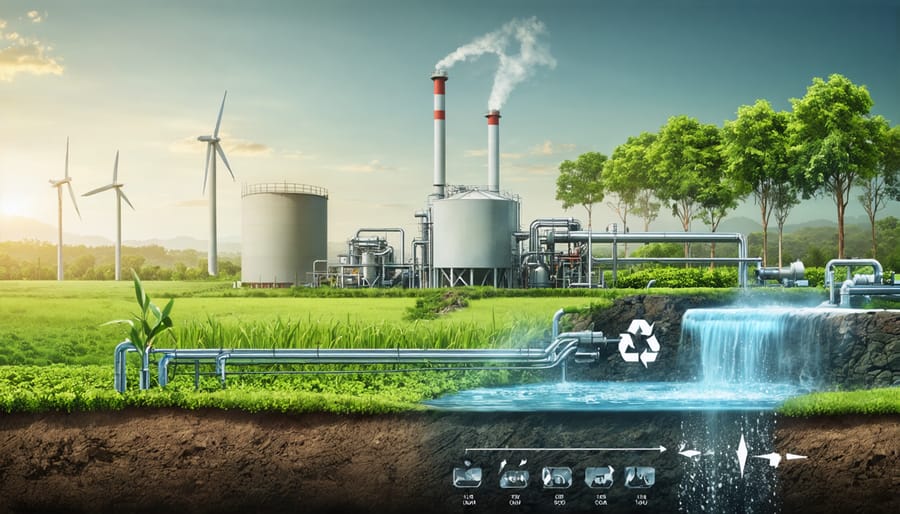Transforming Australia’s energy landscape through bioenergy resources represents one of the most promising sustainable energy solutions of our time. From agricultural waste to dedicated energy crops, these renewable resources power thousands of homes while significantly reducing greenhouse gas emissions. Unlike fossil fuels, bioenergy harnesses organic materials that naturally replenish, creating a continuous cycle of sustainable power generation that supports both environmental preservation and economic growth.
In Australia’s diverse climate zones, bioenergy resources offer unique advantages for water-conscious energy production. Whether converting sugar cane waste in Queensland’s tropical north or utilizing forest residues in Tasmania’s temperate south, these resources adapt to local conditions while supporting regional development. This adaptability, combined with advancing technologies and growing market demand, positions bioenergy as a crucial component of Australia’s renewable energy mix.
The transformation of organic waste into clean, reliable energy not only addresses our power needs but also provides innovative solutions for waste management challenges. As communities and industries increasingly embrace these resources, bioenergy stands at the forefront of Australia’s transition toward a more sustainable and resilient energy future.
Australia’s Key Bioenergy Resources
Agricultural Biomass Sources
Australia’s farming sector generates substantial agricultural biomass resources that can be transformed into valuable bioenergy. Crop residues, including wheat straw, corn stalks, and sugarcane bagasse, represent a significant portion of these resources, particularly in regions like Queensland and New South Wales.
When harvest season wraps up, farmers traditionally burned these leftovers or ploughed them back into the soil. Today, many forward-thinking agricultural operations are converting these materials into energy-rich products. For instance, the Mackay Sugar Mill in Queensland now powers its operations entirely using sugarcane waste, demonstrating the practical potential of agricultural biomass.
Livestock waste presents another promising opportunity. With Australia’s substantial cattle and dairy industries, manure can be processed through anaerobic digestion to produce biogas. Several dairy farms in Victoria have already implemented this technology, reducing their energy costs while managing waste effectively.
Other valuable sources include prunings from orchards and vineyards, which can be collected and processed into wood chips or pellets for bioenergy production. Cotton gin trash, abundant in NSW’s cotton-growing regions, is increasingly being viewed as a valuable energy resource rather than a disposal challenge.
These agricultural by-products offer a win-win solution: farmers gain additional income streams while contributing to renewable energy production, helping reduce carbon emissions and supporting Australia’s transition to cleaner energy sources.

Forest and Wood Processing Residues
Australia’s forestry industry generates significant biomass potential through sustainable forest residues for energy production. These residues include tree tops, branches, and processing byproducts that would otherwise go unused. In fact, our forestry operations typically generate between 30-50% residual biomass, presenting a golden opportunity for renewable energy generation.
The beauty of forest residues lies in their dual benefit – they provide a renewable energy source while helping maintain forest health through proper management practices. Sawmills and timber processing facilities across the country are increasingly integrating bioenergy systems to convert their waste materials into valuable heat and power.
Take the Green Triangle region spanning South Australia and Victoria, where timber processors have successfully implemented biomass boilers to power their operations. These systems not only reduce waste but also slash energy costs and carbon emissions. The residues are collected, processed, and transformed into wood chips or pellets, creating a sustainable cycle of resource utilization.
Moreover, using forest residues for bioenergy supports rural communities by creating new revenue streams and jobs. It’s a prime example of how waste can become a valuable resource when managed properly. With proper sustainability guidelines in place, forest residues represent a significant and largely untapped bioenergy resource that can contribute to Australia’s renewable energy future.
Water-Smart Bioenergy Production
Water Conservation Techniques
Water conservation in bioenergy production is crucial for Australia’s sustainable future, and innovative techniques are making this increasingly achievable. Leading facilities across the country are implementing smart water management strategies that significantly reduce consumption while maintaining optimal production levels.
A standout approach is the closed-loop water system, which recycles and reuses water throughout the production process. This method has shown remarkable results, with some facilities reporting water savings of up to 70% compared to traditional systems. For instance, the Goulburn Valley biorefinery uses advanced filtration technology to purify and recirculate process water, setting a benchmark for the industry.
Another effective technique is precision irrigation for energy crops. Modern sensors and weather monitoring systems help farmers deliver exactly the right amount of water at the right time, reducing waste while maximising crop yield. The integration of drought-resistant crop varieties, particularly suited to Australia’s climate, further enhances water efficiency.
Condensate recovery systems are proving invaluable in steam-based bioenergy processes. By capturing and reusing steam condensate, facilities can significantly reduce their fresh water intake. The Bundaberg biohub demonstrates this perfectly, having cut their water consumption by 45% through implementing these systems.
Smart scheduling of cleaning operations and maintenance procedures helps minimise water usage during non-productive periods. Additionally, the adoption of dry cleaning methods where possible and water-efficient equipment has become standard practice in modern bioenergy facilities.
These water-saving techniques not only benefit the environment but also improve operational efficiency and reduce costs. As the industry continues to evolve, new innovations in water conservation are emerging, making bioenergy production increasingly sustainable in our drought-prone continent.
Water Recycling Systems
Water recycling systems are revolutionising bioenergy facilities across Australia, transforming the way we think about resource efficiency in renewable energy production. These innovative systems capture, treat, and reuse water throughout the production process, significantly reducing the environmental footprint of bioenergy operations.
Leading facilities in Queensland and Victoria have implemented closed-loop water systems that recover up to 90% of process water. These systems typically incorporate multiple stages of filtration, including membrane technology and biological treatment processes, ensuring water quality remains suitable for reuse in various applications.
A standout example is the Oakey Beef Exports facility in Queensland, which combines wastewater treatment with biogas production. The facility’s integrated system treats effluent from meat processing operations, producing clean water for reuse while simultaneously generating biogas for energy production. This dual-purpose approach has reduced their fresh water consumption by 75% and demonstrates the powerful synergy between water recycling and bioenergy production.
Modern water recycling technologies in bioenergy plants often include sophisticated monitoring systems that continuously assess water quality and adjust treatment processes accordingly. These smart systems help optimise water usage while maintaining operational efficiency, proving particularly valuable in drought-prone regions.
The benefits extend beyond water conservation. Recycling systems reduce the load on local water infrastructure, minimise discharge into natural waterways, and often recover valuable nutrients that can be repurposed as fertilisers. For many facilities, the initial investment in water recycling technology is offset by reduced water procurement costs and improved operational efficiency within three to five years.
As Australia continues to face climate challenges, these water-smart approaches are becoming essential components of sustainable bioenergy production, setting new standards for resource efficiency in the renewable energy sector.

Environmental Benefits and Challenges
Carbon Footprint Reduction
Bioenergy resources play a crucial role in Australia’s fight against climate change, offering significant potential for carbon dioxide emissions reduction. When properly managed, bioenergy systems can create a near-carbon-neutral cycle, where the CO2 released during energy production is offset by the carbon absorbed during biomass growth.
Success stories from across Australia demonstrate this potential. The Ballarat Bioenergy Facility, for instance, prevents approximately 65,000 tonnes of greenhouse gases from entering the atmosphere annually by converting organic waste into clean energy. Similarly, sugar mills in Queensland have shown how bagasse-based bioenergy can reduce their carbon footprint while generating reliable power.
What makes bioenergy particularly attractive is its dual environmental benefit. Not only does it help reduce emissions by replacing fossil fuels, but it also provides a sustainable solution for organic waste management. When organic waste decomposes in landfills, it releases methane, a greenhouse gas 25 times more potent than CO2. By capturing this waste for bioenergy production, we prevent these harmful emissions while creating valuable energy.
Looking ahead, the expansion of bioenergy resources could help Australia meet its climate commitments while supporting regional communities. Every megawatt of bioenergy deployed represents not just cleaner energy, but also reduced pressure on landfills and new opportunities for sustainable agriculture.
Ecosystem Conservation
The successful implementation of bioenergy projects depends heavily on maintaining a delicate balance between energy production and ecosystem protection. Across Australia, innovative approaches are demonstrating how this balance can be achieved through careful planning and sustainable practices.
One striking example is the integration of buffer zones around bioenergy plantations, which protect native habitats while supporting biodiversity. These zones act as wildlife corridors, allowing native species to move freely while benefiting from the additional vegetation coverage. In Queensland’s sugarcane regions, farmers are incorporating native plant species between crop rows, creating micro-ecosystems that support local wildlife while maintaining productive energy crops.
Water management plays a crucial role in ecosystem conservation within bioenergy projects. Many facilities now employ closed-loop water systems that minimize impact on local water resources. Additionally, strategic crop selection focuses on species adapted to local conditions, reducing the need for intensive irrigation and protecting natural water systems.
The adoption of mosaic planting patterns has proven particularly successful, where energy crops are interspersed with native vegetation. This approach maintains soil health, prevents erosion, and provides habitat diversity. In Western Australia, several bioenergy projects have successfully implemented these patterns, showing that production goals can align with conservation objectives.
By prioritizing ecosystem health alongside energy production, Australia’s bioenergy sector is setting new standards for sustainable resource management. This approach ensures that renewable energy generation supports rather than compromises our natural environment.

Success Stories: Australian Bioenergy Projects
Australia’s bioenergy landscape is dotted with inspiring success stories that demonstrate the potential of this renewable energy source. The Berrybank Farm Piggery in Victoria stands as a shining example of agricultural waste transformation. By converting pig manure into biogas, the facility not only powers its own operations but also exports excess electricity to the grid, reducing annual greenhouse gas emissions by 16,000 tonnes while providing a sustainable waste management solution.
In Queensland, the Mackay Renewable Biocommodities Pilot Plant has revolutionized the sugar industry by turning bagasse, a sugar cane byproduct, into biofuels and other valuable products. This innovative facility has created new revenue streams for sugar mills while reducing waste and fossil fuel dependency.
The Mount Piper power station near Lithgow, NSW, showcases the successful integration of biomass co-firing with traditional energy generation. By incorporating wood waste from sustainable forestry operations, the facility has decreased its carbon footprint while maintaining reliable power output for thousands of homes.
Another remarkable achievement is the Richgro Bioenergy Plant in Western Australia, which transforms organic waste from supermarkets and food processors into renewable energy and nutrient-rich fertilizer. The facility processes over 35,000 tonnes of organic waste annually, generating enough electricity to power its operations and feed surplus energy back to the grid.
The Northern Oil Advanced Biofuels Pilot Plant in Gladstone, Queensland, demonstrates the potential of advanced biofuel production. This facility converts a variety of waste materials into renewable diesel and bio-crude oil, proving that sustainable alternatives to conventional fuels are not only possible but commercially viable.
These success stories highlight Australia’s growing expertise in bioenergy implementation, showing how innovative thinking and commitment to sustainability can create positive environmental and economic outcomes. They serve as blueprints for future projects and inspire confidence in bioenergy’s role in Australia’s renewable energy future.
As Australia continues to navigate the challenges of water management and renewable energy adoption, bioenergy resources stand out as a promising solution for our sustainable future. The integration of bioenergy systems with water management practices has demonstrated remarkable potential for creating circular economies while addressing both energy and water security concerns.
The success stories from various regions across Australia showcase the versatility and effectiveness of bioenergy solutions. From wastewater treatment facilities generating power for local communities to agricultural operations turning waste into valuable energy resources, these implementations prove that bioenergy is not just environmentally sound but economically viable.
Looking ahead, the future of bioenergy in Australian water management appears bright. Technological advancements continue to improve efficiency and reduce costs, making these systems more accessible to communities of all sizes. The growing support from government initiatives and increasing private sector investment signals a strong commitment to expanding bioenergy infrastructure nationwide.
For Australia to fully realize this potential, continued collaboration between industry stakeholders, research institutions, and government bodies remains crucial. By maintaining our focus on innovation and sustainable practices, we can create a future where bioenergy plays a central role in water management, contributing to both environmental conservation and energy security.
The path forward is clear: embracing bioenergy resources in water management isn’t just an option – it’s a necessary step toward a more sustainable and resilient Australia. With continuing technological improvements and growing public support, bioenergy is set to become an increasingly integral part of our nation’s water and energy landscape.

